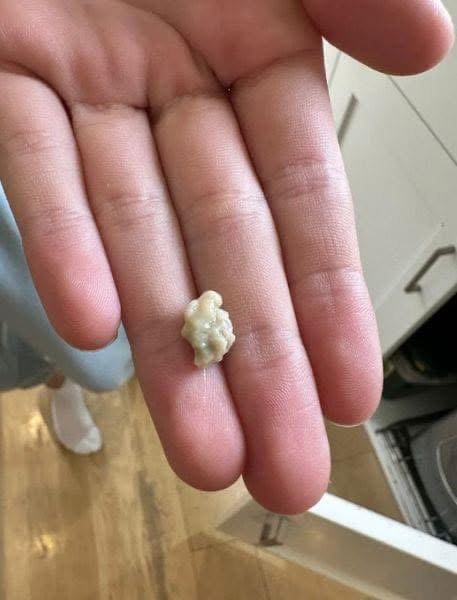Here’s What You Need to Know About Tonsil Stones – The Weird Pimple-Like Growths in Your Throat
Tonsil stones, also known as tonsilloliths, are small, calcified lumps that form in the crevices of your tonsils. These growths can resemble little pimples or lumps in the throat, and although they are typically harmless, they can cause discomfort and unpleasant symptoms. If you’ve ever noticed a strange taste in your mouth, bad breath, or even a sore throat, tonsil stones might be the culprit. Here’s what you need to know about them.
What Are Tonsil Stones?
Tonsils are two small glands located at the back of your throat. They are part of your immune system and help protect the body from infections by filtering out bacteria and viruses. Your tonsils have deep crevices called crypts where food particles, dead cells, and mucus can get trapped. Over time, these substances may harden and form small, calcified lumps, which are what we know as tonsil stones.
Symptoms of Tonsil Stones
Tonsil stones often go unnoticed, especially when they are small. However, when they grow larger or become dislodged, they can lead to several symptoms:
- Bad breath (Halitosis): The bacteria that form tonsil stones can emit a foul odor, leading to persistent bad breath.
- Sore throat or difficulty swallowing: As the stones irritate the tonsils, they can cause discomfort or make swallowing painful.
- Ear pain: In some cases, tonsil stones can cause referred pain in the ears, due to the close proximity of the tonsils to the ear canals.
- Visible lumps in the throat: You might notice white or yellowish spots or lumps at the back of your throat or on your tonsils.
Causes of Tonsil Stones
Tonsil stones are typically caused by the accumulation of debris in the tonsil crypts. These may include food particles, dead skin cells, and mucus, which can get stuck and gradually harden into stone-like formations. Poor oral hygiene, frequent throat infections, and large tonsils can increase the likelihood of developing tonsil stones. People with chronic sinus issues or post-nasal drip are also more prone to these growths due to the excess mucus in the throat.
Treatment and Prevention
Tonsil stones are generally not dangerous, but they can be bothersome. In some cases, they may even require medical attention. If the stones are small and not causing significant issues, they might be treated at home. Here are a few methods to address tonsil stones:
- Saltwater gargles: Gargling with warm salt water can help dislodge small stones and soothe the throat.
- Oral hygiene: Regularly brushing your teeth and using mouthwash can help prevent the buildup of debris in the tonsils.
- Hydration: Drinking plenty of water helps prevent the accumulation of mucus and keeps your throat moist.
- Manual removal: In some cases, people use a cotton swab or a tonsil stone removal tool to carefully dislodge larger stones. However, this should be done with caution to avoid injuring the tonsils.
In more severe cases, a doctor may recommend tonsillectomy, which is the surgical removal of the tonsils, especially if the stones are large or recurring frequently.
Conclusion
Although tonsil stones can be uncomfortable and irritating, they are generally harmless and treatable. If you notice symptoms like bad breath, a sore throat, or the presence of small lumps in your throat, it’s worth considering the possibility of tonsil stones. Maintaining good oral hygiene and staying hydrated are key to preventing these growths from forming, but if they persist, consult a healthcare professional for further advice.

















